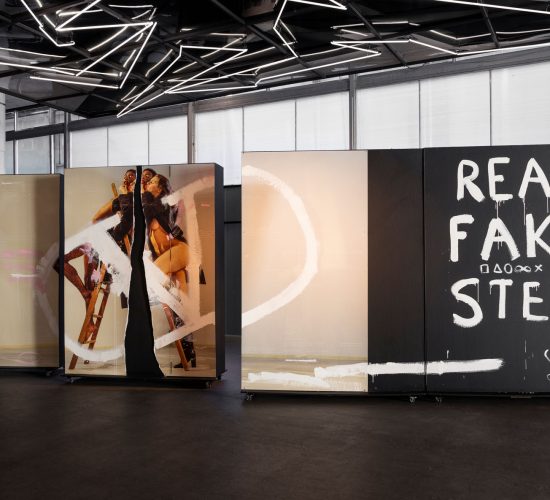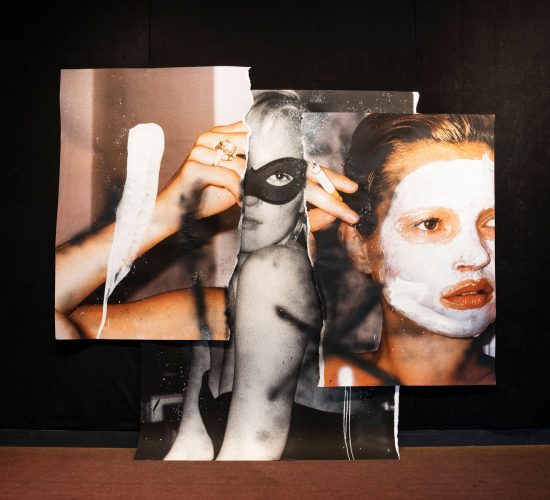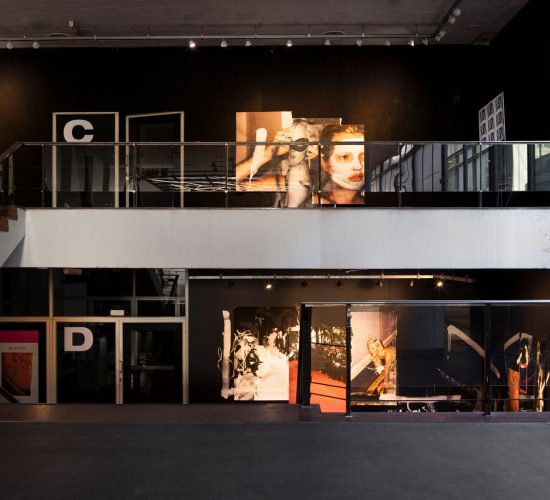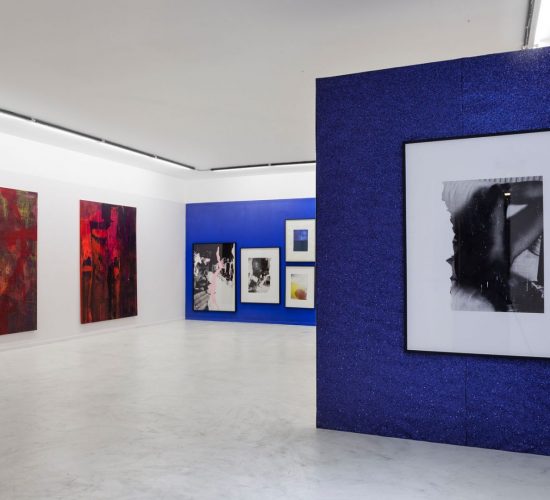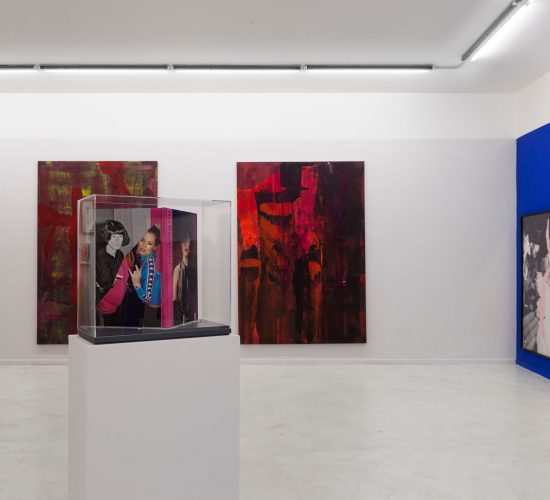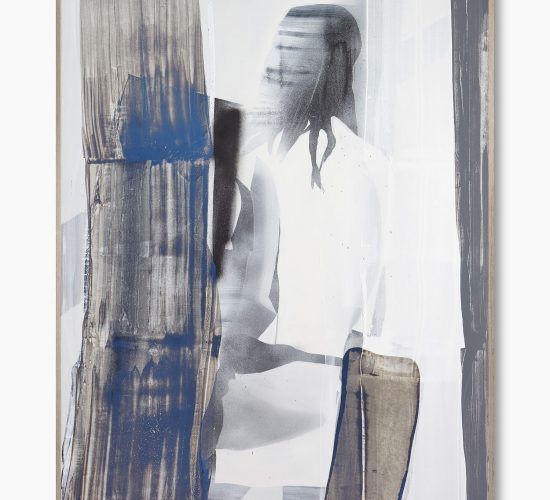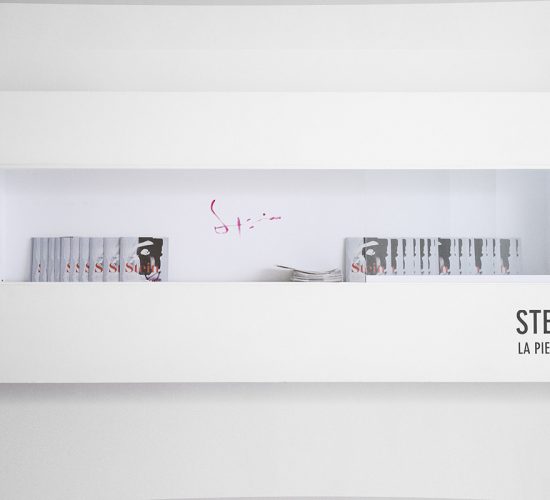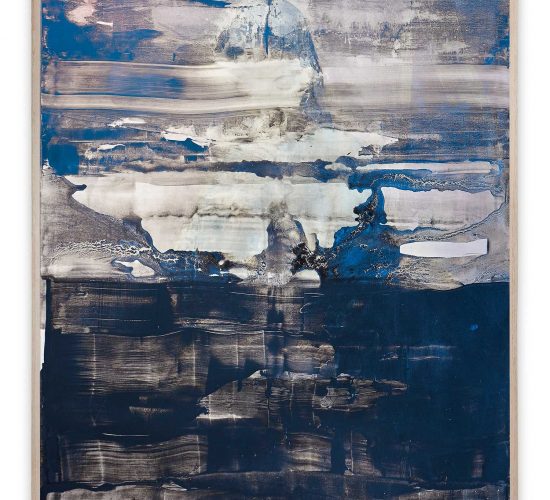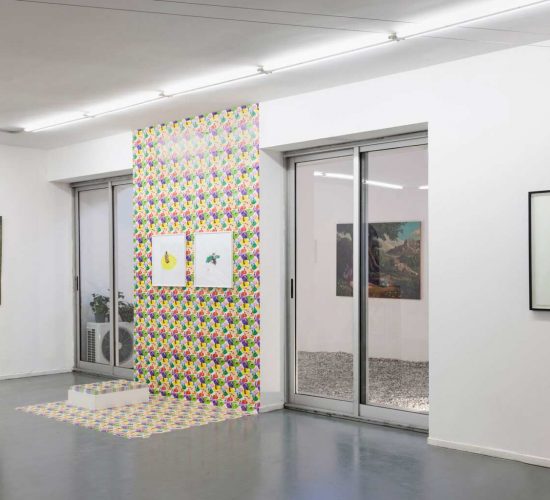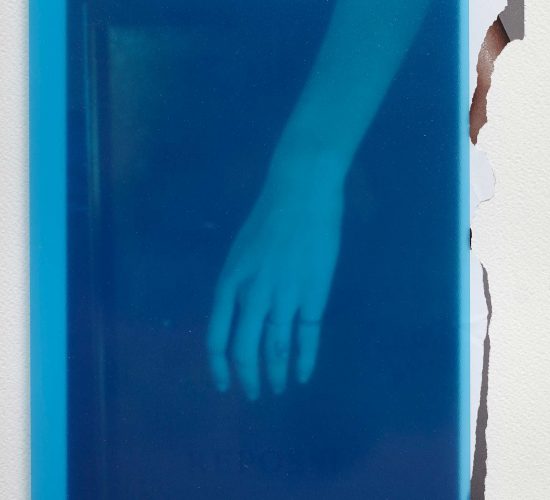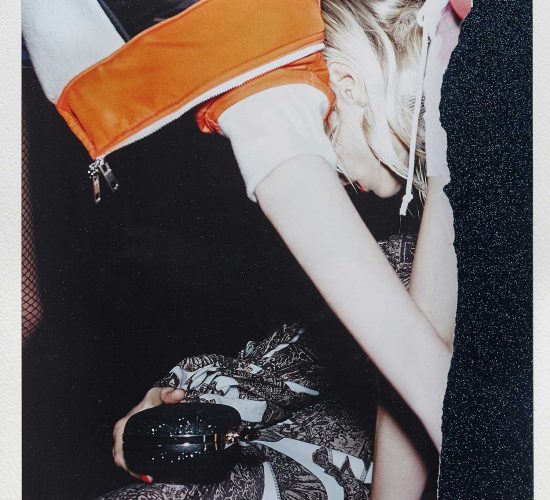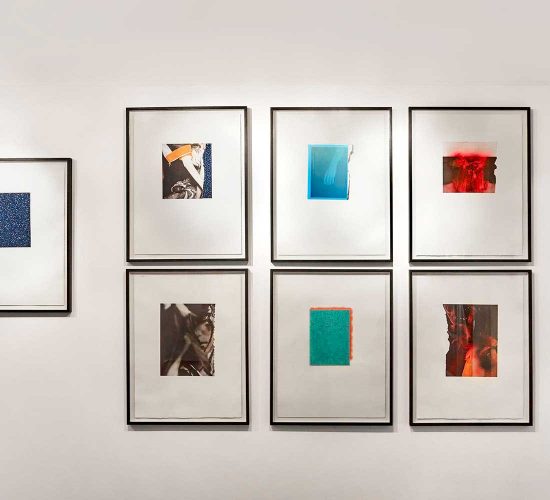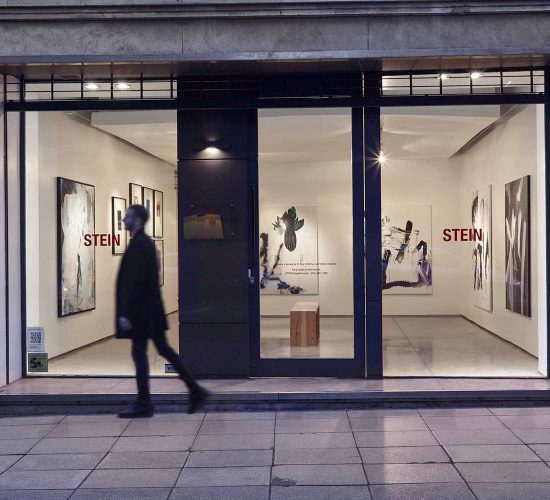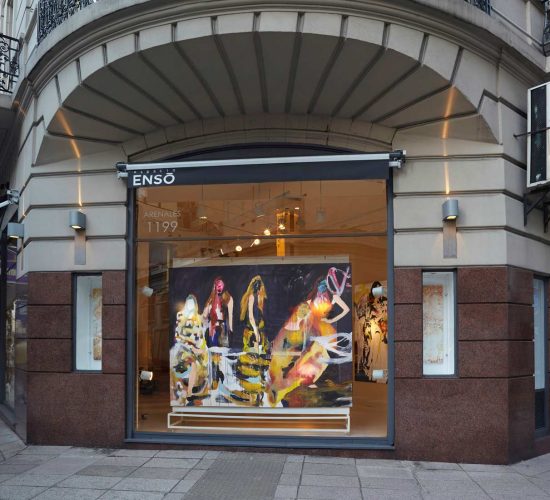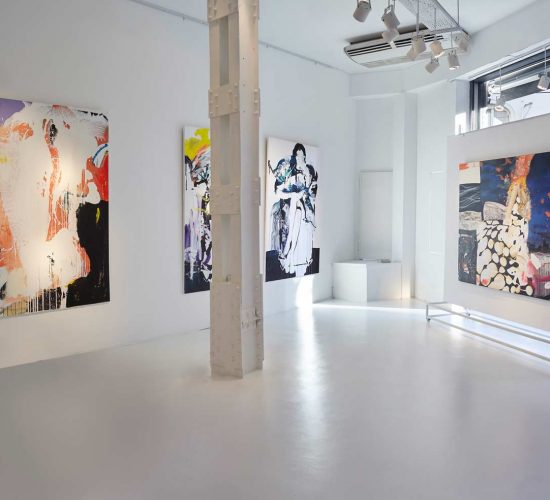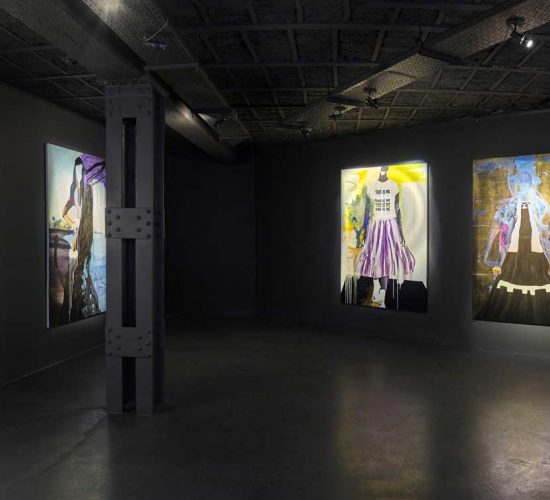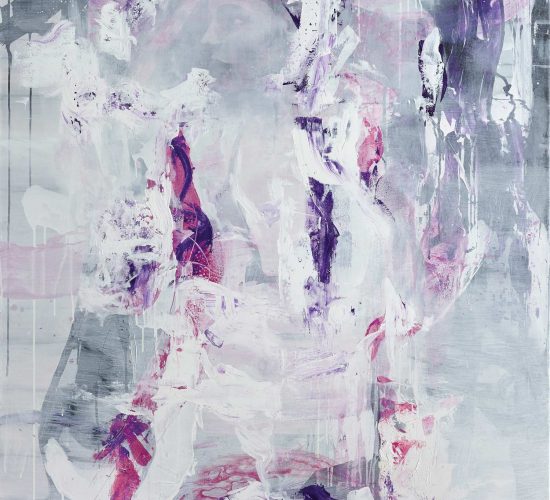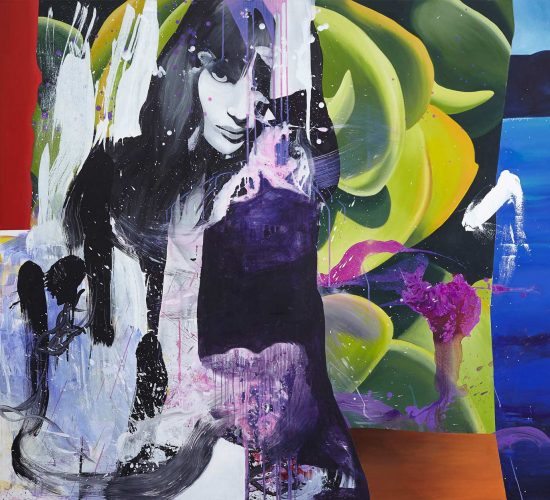Exhibitions
REAL FAKE
This exhibition, curated by Hernán Giagante, features works by the artist made specifically for the space of the Centro Cultural San Martín.
September 1, 2022- November 20, 2022
By Hernán Giagante
WITHOUT EYES TO PARADISE
If the world were revealed only in the possible, and the probable were nothing more than the advent of an evidence, the opposition between true and false would be intelligible. The formula Real Fake disturbs the linguistic paradox between true and false. This duplicity, despite its apparent confrontation, is subordinated to a synchronic sequence. The real diachrony is between this formula and the real.
Real Fake is a fraud that feeds on a lure: the image.
Before our eyes the categorical proof: that which we call image is the mirror that reflects the impotence to turn the page of the visible. The inability to see the real. The realization that to see is to see what is given to see. Just that. That to see is not to see that which is removed from being seen. The affirmation, therefore, that seeing results in not seeing. That extirpating the gaze is a condition for seeing everything, and that the return to paradise is without eyes.
An image replaces another image. A letter for another letter.
There is no image outside of thought. It is a product of it and refers, in indissoluble cadence, to the spelling. Perception is reading and we only see because we read.
The contemporary image, even oneiric, transmutes perception into reading.
In the visual horizon proposed by Pabli Stein there are two equilateral triangles facing each other in perfect symmetry. There are bodies portrayed and that, with sharp inspiration, found the representation. There is eroticism and skill. There is a catwalk before the flashes of cameras that becomes a crawling floor of intimacy. An exterior red turned into interior black. A mask that is a mask, and both concealing and revealing. Painting that traces meaning while covering matter for more matter. Folds and folds.
Chaining of images that substitute images. Undivided totality that masks its own lack. In every image an image is missing.
If we could see the real? After all, the eye only sees those who look at it.
El ojo en la boca
This exhibition brings together paintings, large-format collages, a sculpture, a video and a large intervened mirror. As part of the exhibition, curated by Irene Gelfman, "Stein, Noche abierta" (Stein, Open Night), a bilingual book that covers a decade of work, will be presented.
September 7, 2021- November 6, 2021
By Irene Gelfman
We live surrounded by images that stimulate our imagination – whether through memory or anticipation – but when confronted with them we can’t help but wonder: where is this alternative way of life? El ojo en la boca forces us to assume that we are trapped in images, enveloped in a sick visuality that tempts us to die of iconicity. We act like Beckett’s characters in an eternal and absurd wait for a promised happiness that never comes. We are dispossessed of the power of action and nothing belongs to us.
Pabli Stein works with images from the world of advertising and fashion. A language made up of words and images that traps us wherever we go, wherever we read, wherever we are. They are representations charged with a hedonistic gaze, with an eagerness to turn each photographic session into an incitement to joy, sex and the consumption of luxury goods. A celebration of excess. The artist is aware of this machinery and plays with it in an unprejudiced, daring and brazen way.
A characteristic of Stein’s aesthetic is to throw himself – without fear of prejudice – into working with the perversity of luxury present in the images he selects, where the models take the place of the goddesses and muses of Renaissance paintings to become pagan icons of a culture of consumption and saturation. His works reveal the ephemeral happiness of consumption and confront us with a universe where less is not more. Pabli Stein produces from what has already been produced, resignifying existing signs and introducing them into new spaces: from the catwalk and magazines to the world of contemporary art. Today things are no longer clear. Just as advertising used the discursive strategies of European oil painting, art incorporated, with its great power of phagocytisation, the world of fashion. We are living in a new model of hybridisation, witnessing an era in which the boundaries between the cultural and the commercial have been broken down. And while no one can deny that capitalism produces horror, it also has the ability to produce beautiful things.
El ojo en la boca puts the accent on a cliché in vogue, Stein confronts us with the gesture of taking the images that are available to everyone and appropriating them in order to, in this multiplication and manipulation, grant each one the value of an original. The key lies in his gaze, in his selection, and in this fortuitous encounter between the advertising image and his eye. Chance comes into play in the creative process. Stein cuts out, intervenes and makes up. His gesture resides in subtleties, in veiling with small drips of paint, aerosol, layers of material, glitter and minimal cut-outs. Each image with which the artist works, in itself, is charged with desire, but a desire that now has a double distance because of the impossibility of the concretion of that promise of happiness and because of the veiling that the artist places. The proposal resides in looking at what remains visible, summoning up what has disappeared, examining the traces, the traces that the artist leaves in that (very) act of concealing.
La Piel Traslúcida
The artist's first public exhibition in Spain features 8 large-format paintings on display at Haimney Gallery in Barcelona's picturesque El Born neighbourhood.
September 5, 2019 - October 20, 2019.
By M.S. Dansey
Fascinated by the images in fashion magazines, Pabli Stein takes them by storm, makes them his own, unquestionably as an excuse to unleash his other passion, painting. Figurative reconstruction of images that obsess him is a task he undertakes with a painters’ religious dedication. But the image never turns out steady, it does not become a faithful copy of the model, because in the process – as in the practice of pleasures –, you never know where or how it ends.
Stein accepts the task as a physical act. Fabric, which at the beginning serves as a bed for love, delimits a crime scene in the end. No crime of passion, that’s for sure. And at this point let’s open a parenthesis and say that when the art system is ruled by a virtually impersonal conceptualism, this sensitive freedom is read as a statement of principles. This is not an automatic, purely emotional act. He gives in to his instincts, he lets go, he gets lost, true. But he surrenders with eyes wide open; the artist examines his practice and, like every good lover, allows time to go by smoothly, intensely. It does not follow a binary mindset that can only recognize active/passive mode. He gives in to the interregnum of tension triggered by his object of desire. His painting reacts to a primary drive, the workshop; from some sort of inception between the artist and his model a fresh, powerful, uninhibited image arises.
Sentimientos Encontrados
A group show presented by Quimera Galería. Two works by the artist are featured in the room.
November 12, 2020 - February 28, 2021
STEIN (obras recientes)
New paintings by Stein from the "open night" series curated by Eduardo Stupia at OTTO gallery in the Recoleta neighborhood of Buenos Aires.
May 19, 2017 - June 18, 2017.
Eduardo Stupia, April 2017.
Pablo Stein’s painting seems to manifest, or happen, in a certain state of conflict, a conflagration between elements that struggle to prevail over one another, but ultimately neither appears as dominant. And this may be due to an orderly decision, a structural program, or a consequence of an inner quality of the artist, debating between forces, magnitudes and movements that break in and backward indistinctly into the territory of the painters’ practical consciousness, that turns the medium and the canvas into some kind of battlefield.
Unmistakable figures, invariably feminine and almost always turning their backs, or slit-side glancing a smooth half-profile, developed halfway between reference and geometric synthesis, sometimes metamorphose into formless silhouettes, strangely voluptuous lumps, and survive the onslaught of a convulsed exudation of squirted, blown paint in a dissruptive fight of thick crossings, splashes and brushes.
If a taxonomy of these components were to be tested, it could be ascertained that they come from both very pregnant and identifiable iconographic sources – the rhetoric and mannerisms of fashion photography, figurative stylization – as of various genres and techniques – material abstraction, prototypical strokes, stains, wild brushstrokes and action painting outpourings – which are also nourished by terms usually conceived as opposed, in a polarity where the dilemma, or dialectics between action and reflection takes a leading role again. Textures and pigments, fluidity and density, corporeal and atmospheric, contrast and combination, visible and occluded come together and apart, they coalesce and dilute, as a secular alchemy’s fluids and elements that contest the thematic and semantic physiognomy of each piece, being useless, or impossible to detect their ultimate affiliation, other than the clash of modalities and stimuli, if not opposite, at least disparate.
When he engages in paper collage on paper, and despite still being captured by this dystopian tune, Stein finds in this medium a more restrained variant, as if the temperament he displays in his paintings now imposes a pause, a respite, between colored papers covered in glitter, tracing paper used as glazing – equivalent to the vaporous acrylic clouds obscuring the planes – and photographs dissolved in mutilated clippings on which aerosol shots suddenly burst.
A zone of deceptive formalism opens up here, a paroxismal fervor gives way to a more elegant, less overwhelmed sensibility. And all at once, in this deliberately restricted ground, hidden behind a discreet decorativity, and in the residues of altered images in loud surface effects, lurks the purest, sharpest and pulsing face of a throbbing and turbulent painter who, momentarily secluded, gets ready for the moment to return to the fray.
Eduardo Stupia, April 2017.
Color Oculto
A major solo exhibition of 16 paintings
October 20, 2015 - December 21, 2015.
Catalog introduction by Eugenio Cuttica, 2015.
Few painters achieve a balance between two hemispheres. An energetic symbiosis between abstraction and figuration. Pabli Stein is able to achieve a synthesis between what are commonly defined as irreconcilable opposites. The sanguine and hepatic gestures of the artist manage to create communicating vessels between the emotional part and the intellectual channels and demonstrate the completeness and its possibility.
